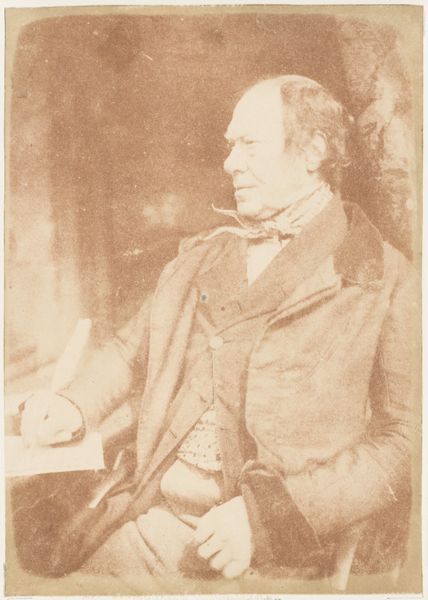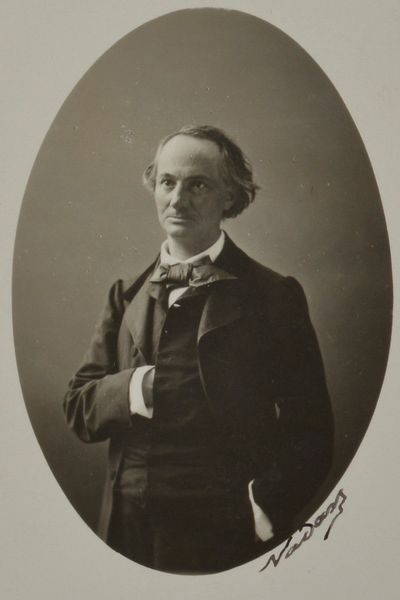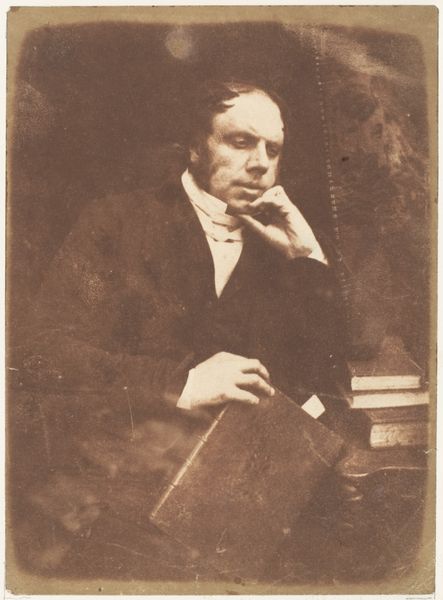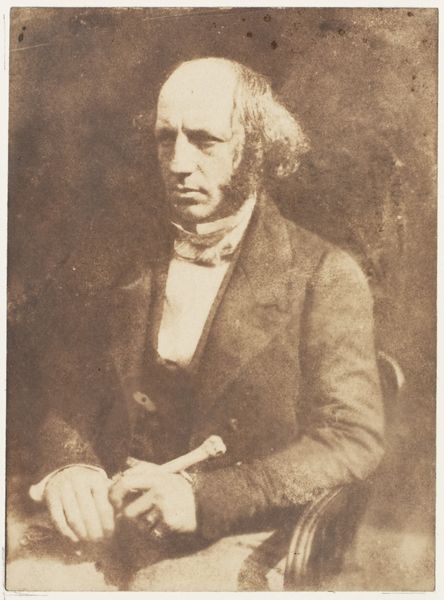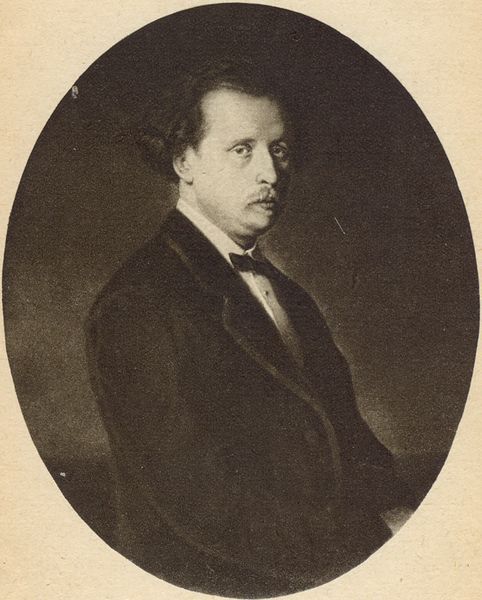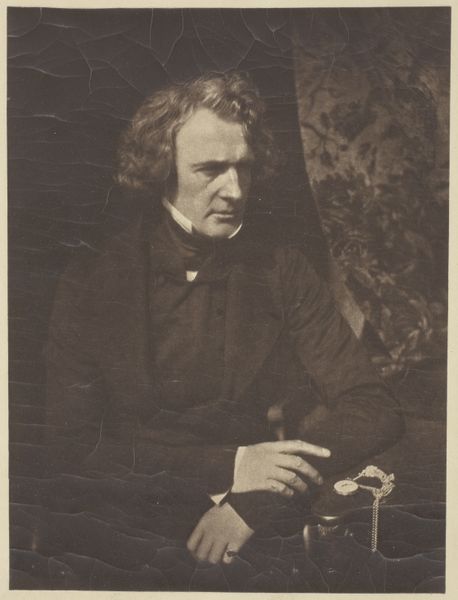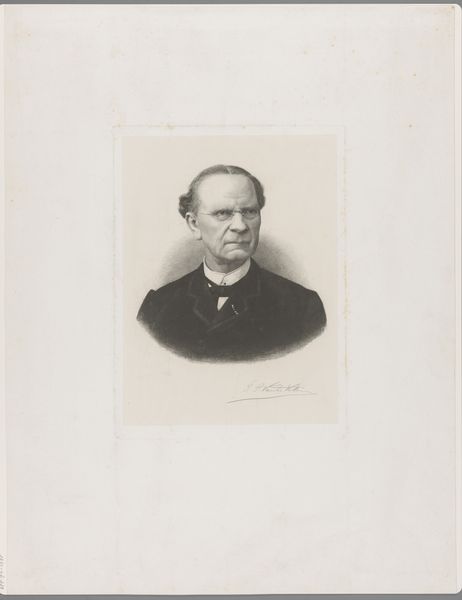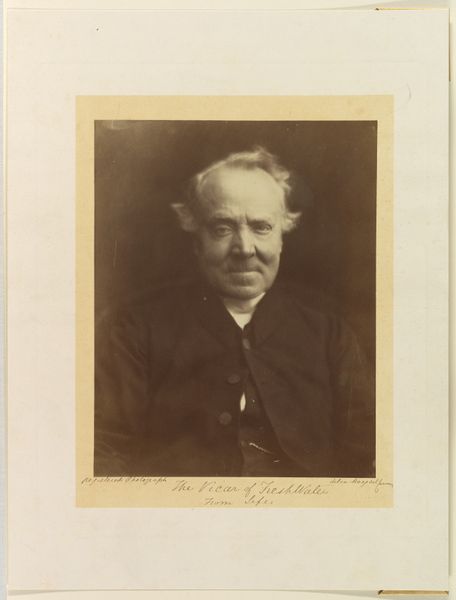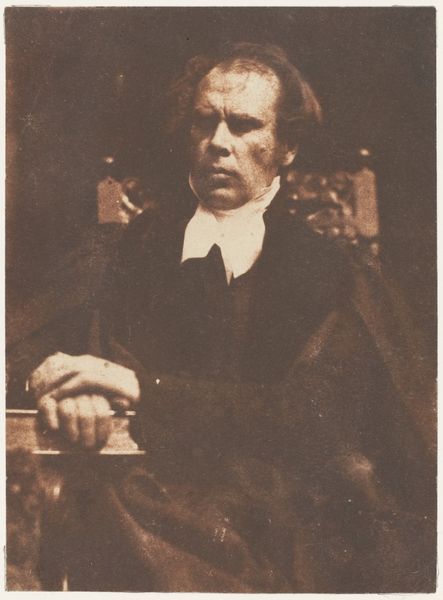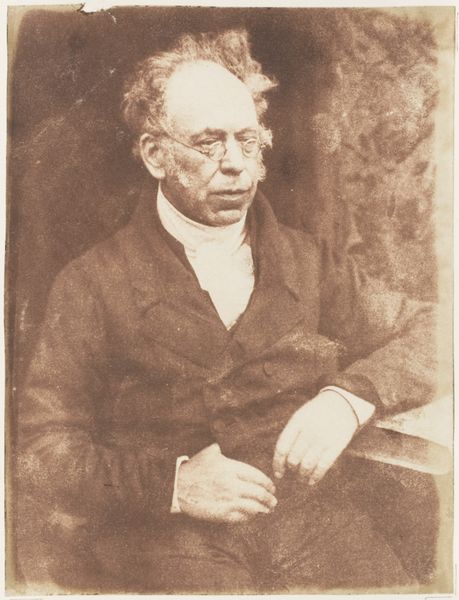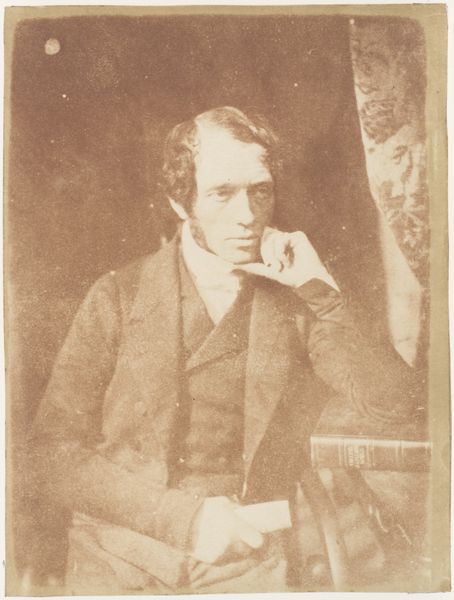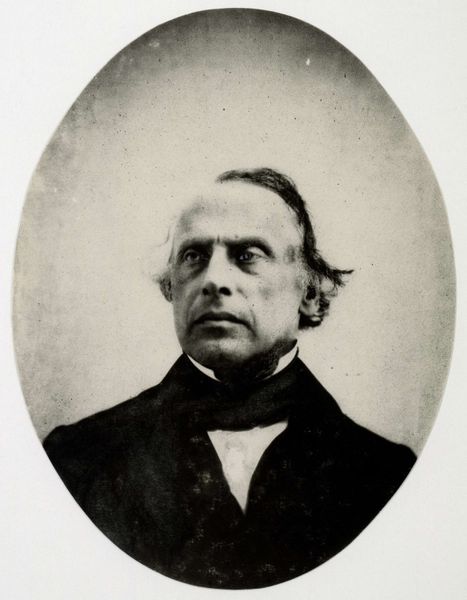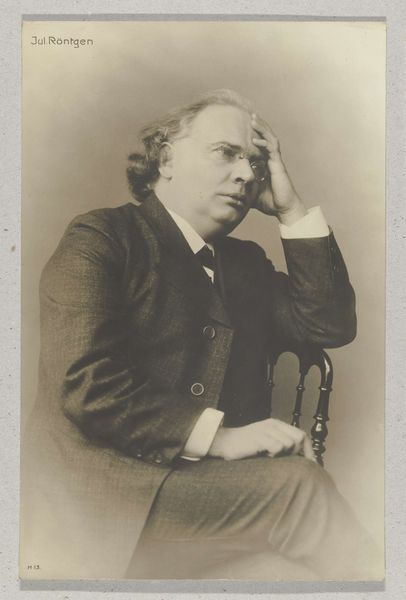![[The] Revd Mr [Thomas Henshaw] Jones by David Octavius Hill](/_next/image?url=https%3A%2F%2Fd2w8kbdekdi1gv.cloudfront.net%2FeyJidWNrZXQiOiAiYXJ0ZXJhLWltYWdlcy1idWNrZXQiLCAia2V5IjogImFydHdvcmtzL2YxNDZlYzQ0LWEwZGItNDAzOS1iYjRkLWU1YWE4MWM5ZWM1Ni9mMTQ2ZWM0NC1hMGRiLTQwMzktYmI0ZC1lNWFhODFjOWVjNTZfZnVsbC5qcGciLCAiZWRpdHMiOiB7InJlc2l6ZSI6IHsid2lkdGgiOiAxOTIwLCAiaGVpZ2h0IjogMTkyMCwgImZpdCI6ICJpbnNpZGUifX19&w=3840&q=75)
print, daguerreotype, paper, photography
#
portrait
# print
#
daguerreotype
#
paper
#
photography
#
romanticism
Dimensions: 20.7 × 15.5 cm (image/paper)
Copyright: Public Domain
Curator: This intriguing photograph is titled "Revd Mr Thomas Henshaw Jones," and it comes to us from David Octavius Hill, made sometime between 1843 and 1846. Hill utilized the daguerreotype process, resulting in a print on paper, now held in the collection of The Art Institute of Chicago. Editor: Immediately, I'm struck by the image's soft, sepia tones. It gives it such a nostalgic, almost ethereal quality. And the light, oh, the way the light gently illuminates the subject’s face, highlighting the details and creating a sense of depth. It’s beautifully composed. Curator: It's more than just aesthetics, though. This image reflects the burgeoning photographic societies of the mid-19th century. Hill, originally a painter, embraced photography as a means to document Scottish society and figures like Mr. Jones, capturing a certain intellectual and spiritual gravitas then so valued. It speaks volumes about how photography was being employed to establish social status and document prominent members of the community. Editor: Absolutely, that socio-cultural context is crucial. But also consider the technical mastery! The textures of the sitter's coat, the subtle gradations of tone in his face, the carefully balanced asymmetry of the pose – it all creates an image of undeniable, almost Romantic intensity. Notice his gaze; averted but pensive. It imbues him with an almost Byronic melancholy, don’t you think? Curator: A melancholy, perhaps. But one shaped by the performative requirements of portraiture. Mr. Jones's attire, the white stock around his neck, are all conscious signals to his status and profession. Even the seeming casualness of his pose is constructed to convey respectability within a particular social frame. Editor: Yet that doesn’t diminish the artistic decisions made to create this particular arrangement of form, tone and light. Together they construct a figure full of reflection; a potent symbolic figure of that moment, captured so deliberately. It really draws me in, irrespective of social conventions of the era! Curator: I agree it's fascinating on many levels. Hill gives us a remarkable glimpse not just into a man's likeness but into the complex relationship between art, identity, and social standing in the 1840s. Editor: Precisely. Whether we analyze it for its formal qualities or for its cultural context, it retains a certain enigmatic power to connect us to the past.
Comments
No comments
Be the first to comment and join the conversation on the ultimate creative platform.
